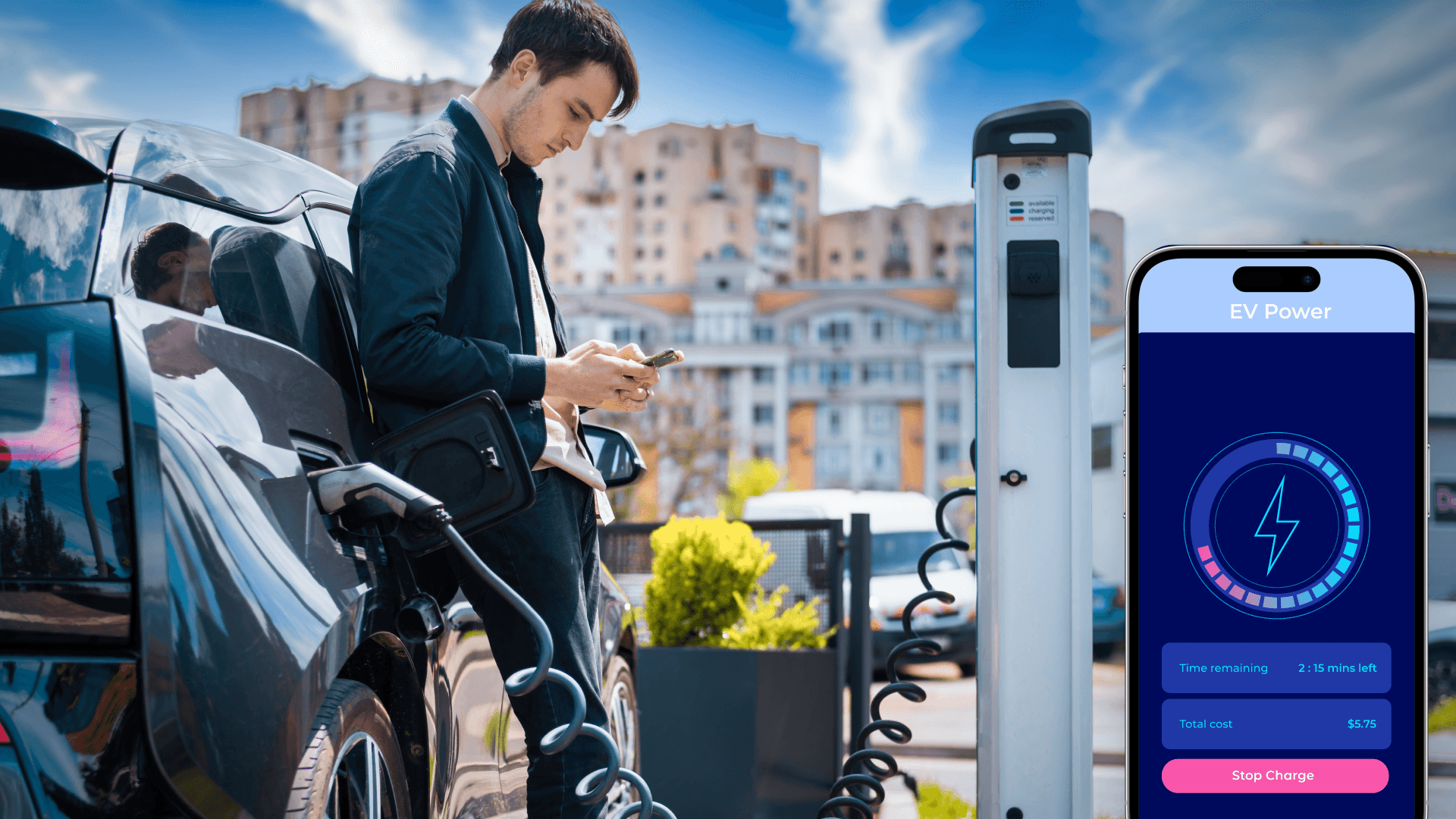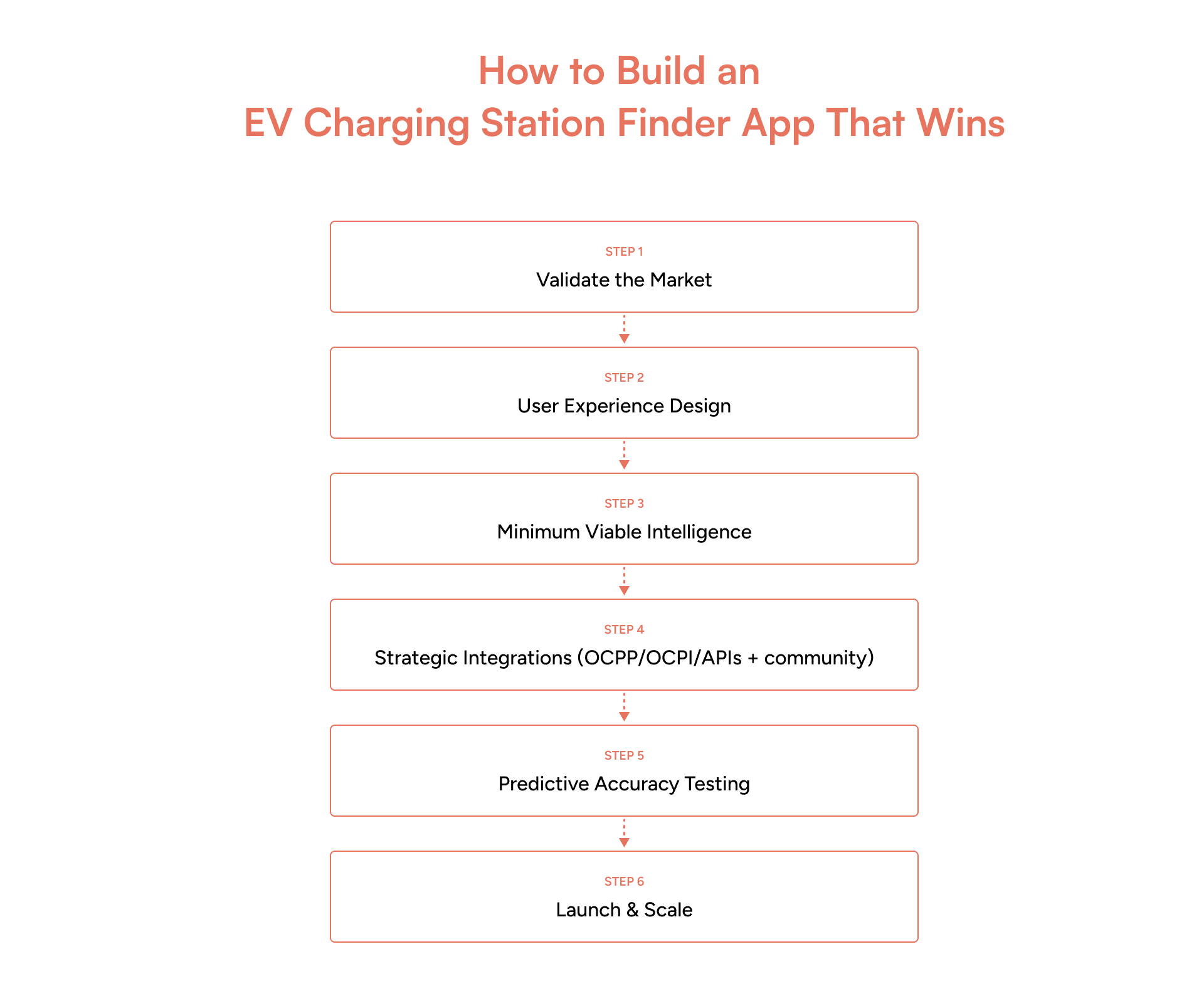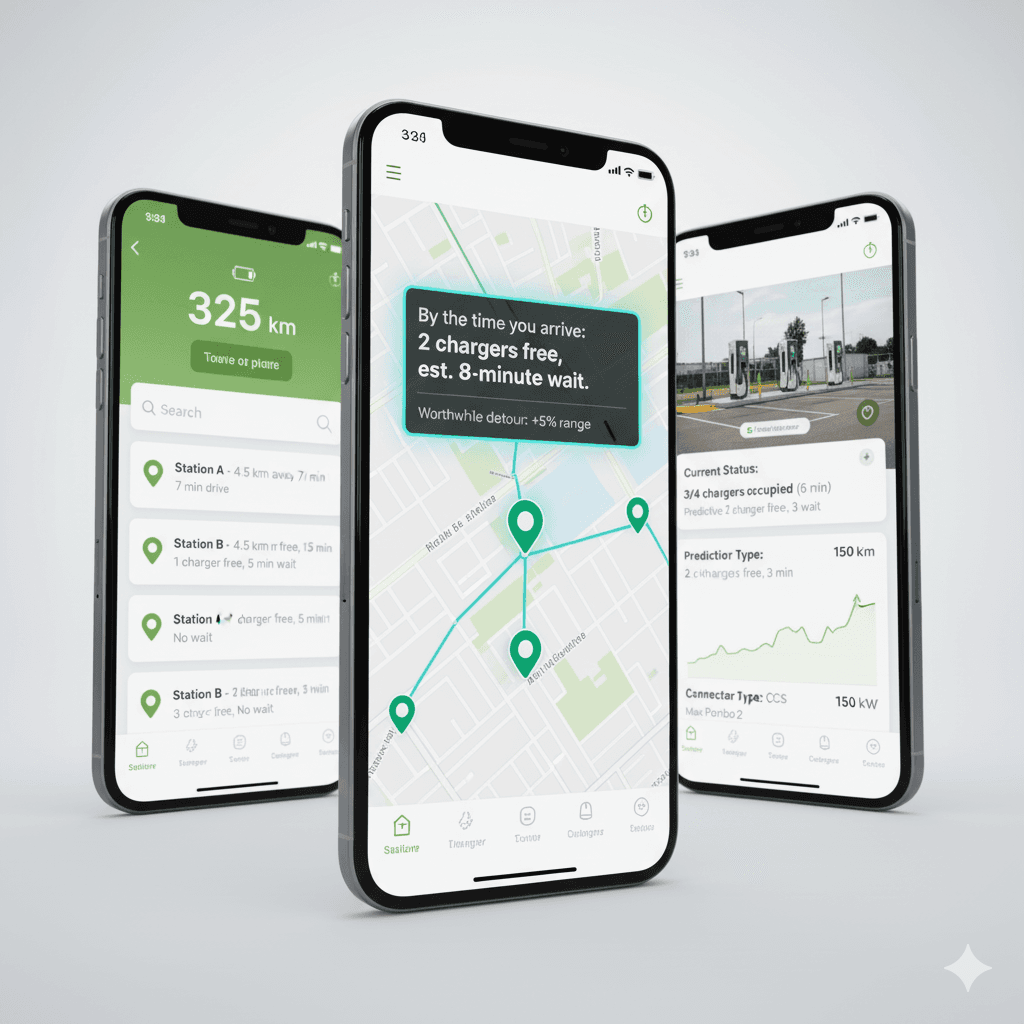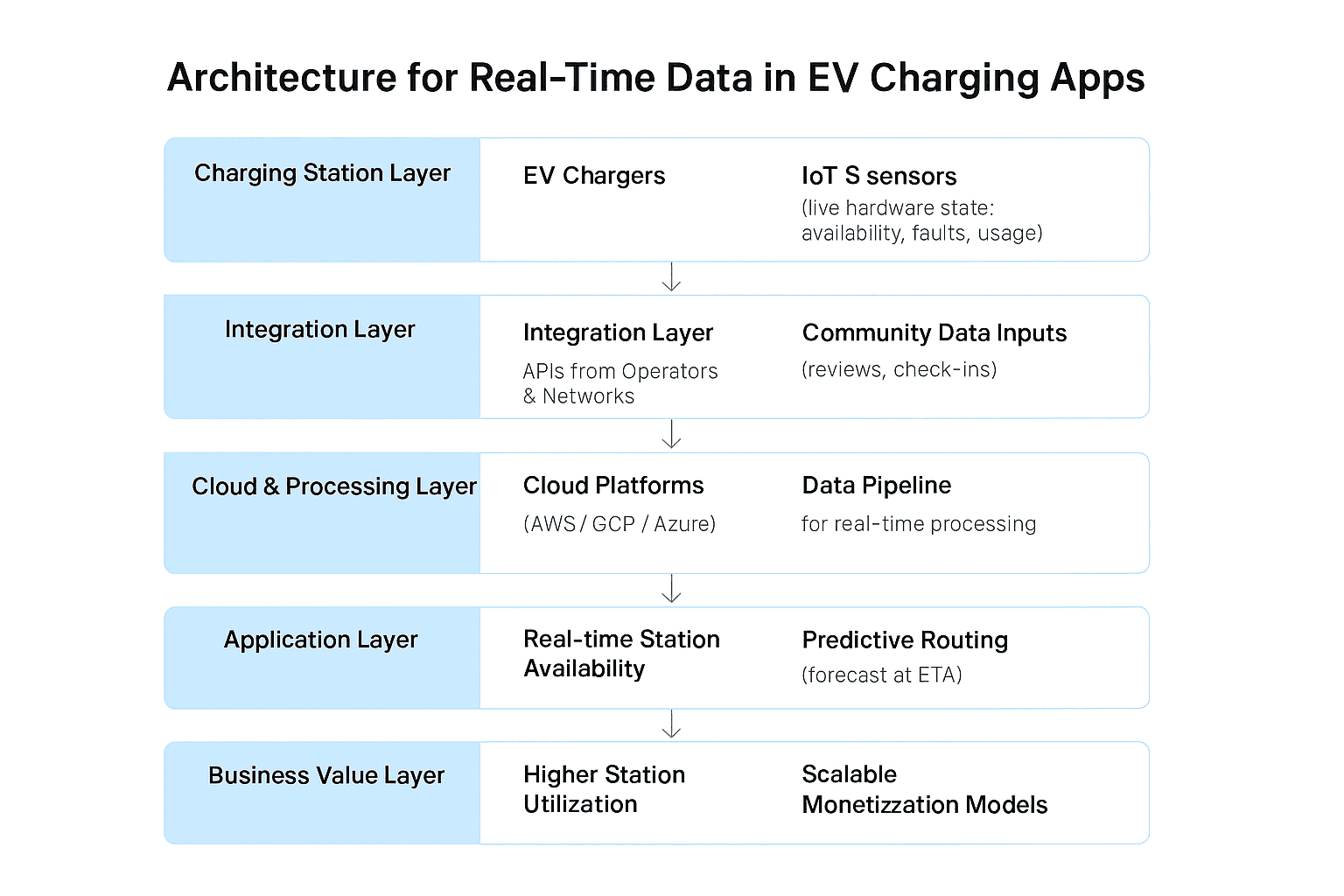Table of Contents
How to Build an EV Charging Station Finder App
Author

Subject Matter Expert

Date

Book a call
Key Takeaways:
- The EV apps that win are those that can predict charger availability and optimize routes, giving drivers certainty instead of features alone.
- Long-term growth depends on building scalable systems from day one—modular backends, reliable data, and compliance baked into the architecture.
- Data becomes the moat: apps that turn usage patterns and integrations into intelligence gain a durable edge and market leadership.
How to Build an EV Charging Station Finder App That Wins


Saurabh Sahu
Chief Technology Officer (CTO)
Most EV app tutorials start the same way: “Integrate Google Maps, connect a charging station API, add payments.” On paper, the result looks complete. In practice, these apps fail.
1. Validate the Market First
2. User Experience Design

3. Build a Minimum Viable Intelligence
4. Build Integrations as Strategic Infrastructure
5. Predictive Accuracy Testing
6. Launch and Scaling Strategy
Essential Features for a Market-Ready EV Charging App
An EV charging app cannot be characterized by the number of features it includes in the application, but by the business value that each feature produces. The components other than the latter are necessary not because they would be so good on a product roadmap, but because they directly affect the adoption, retention, and monetization.
1. Real-Time Charging Station Locator
2. Slot Dealing and Booking
3. Basic Multiple Pay Gateway Support
4. User Reviews and Ratings
5. Status Update Push Notifications
6. Car Navigation Intercompatibility
7. Rewards Programs and Loyalty
Advanced Features for Competitive Advantage
Although the above features are the basic pillars of leadership, the more eminent features usually make the difference between the leaders and the followers.
1. AI-Based Route Optimization
2. IoT-Based Station Brilliance
3. Subscription Plans
Tech Stack for an EV Charging Station Finder App
Scalability, speed to pickpocket the market, and cost effectiveness is made possible by the right tech stack.
| Layer | Technologies | Business Value |
|---|---|---|
| Frontend | React Native, Flutter | Single codebase for iOS and Android → apps launch up to 4× faster and at lower cost. |
| Backend | Node.js, Django |
Scales effectively and processes real-time data with reliability. |
| Maps & Navigation | Google Maps, Mapbox | Precise routing builds user confidence and trust. |
| Payments | Stripe, PayPal | Safer, universal payments with limited drop odds. |
| Cloud Infrastructure | AWS, GCP, Azure | On- science and worldwide coverage. |
| Security & Compliance | PCI DSS, GDPR | Secures information, gets compliance, fosters trust. |
How to Receive Real-Time Data from EV Charging Stations

The Challenge in Building EV Charging Station Finder Apps
Business & Revenue Models for EV Charging Apps
Monetization in EV charging apps is no longer about a single transaction stream. The companies that lead this market layer different models, ensuring revenue grows as adoption scales.
Pay-Per-Use
Subscription Plans
Operator Commissions
Advertising & Partnerships
Fleet Integrations
Cost Breakdown of EV Charging Station Finder App Development
The price of setting up an EV charging station finder application can differ in accordance with the quantity of in-depth features, scalability, and long-term perspectives. Rather than considering it to be a single figure, it is better to consider development in phases, each of which brings functionality, intelligence and business value. Below are a few things that you should expect at various levels:
| App Level | What You Get | Timeline | Investment |
|---|---|---|---|
|
Quick MVP
| Maps, station search, basic payments | 12–16 weeks | $50K – $80K |
| Market-Ready | Live availability, booking, user accounts, and admin panel | 18–24 weeks | $100K – $160K |
| Full Platform | Predictive intelligence, fleet tools, enterprise features | 24–32 weeks | $200K – $350K |
| Ongoing | Hosting, updates, new features, support | Monthly | $5K – $15K/month |
Why GeekyAnts Is the Right Partner for EV App Development

Saurabh Sahu
CTO, GeekyAnts
What Sets GeekyAnts Apart
- Scalability-First Architecture – Modular backends, resilient data pipelines, and cloud-ready frameworks designed to handle growth seamlessly.
- Proven Expertise in Data Intelligence – Predictive algorithms, real-time insights, and integrations that create competitive moats.
- Cross-Industry Experience – Success stories in mobility, fintech, and IoT that translate directly to the EV ecosystem.
- Compliance & Security by Design – PCI DSS, GDPR, and global standards embedded into development from the start.
- Strategic Partnership Approach – Beyond development, we collaborate to position your app for long-term market leadership.
Conclusion
The future of EV charging apps will not be defined by features but by intelligence. Success depends on predicting availability, scaling with confidence, and turning data into trust. As EV adoption accelerates and infrastructure investment surges, only platforms built on data-first foundations will endure. Those that prioritize predictive accuracy, user confidence, and scalable design will not just compete—they will set the standards for how drivers, operators, and fleets connect in the electric future.
Dive deep into our research and insights. In our articles and blogs, we explore topics on design, how it relates to development, and impact of various trends to businesses.


